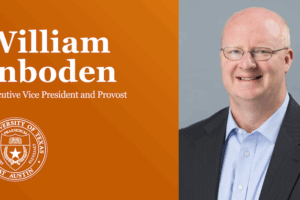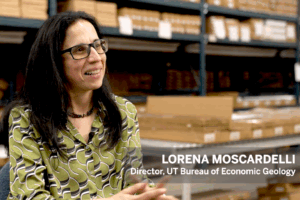AUSTIN, Texas—Using children’s toys, power tools and household products such as toasters, Dr. Kristin Wood, professor of mechanical engineering at The University of Texas at Austin, has worked to overhaul traditional approaches to teaching engineering.
As a result, he has won the 2000 Curriculum Innovation Award of the American Society of Mechanical Engineers. The national award program recognizes innovations in mechanical engineering and mechanical engineering technology education that have the potential to be used by many schools.
Wood and his colleague, Dan Jensen of the U.S. Air Force Academy, received the award for an ongoing three-year-old collaboration that applies theories about learning styles to the development of mechanical engineering curricula.
The researchers based their work on different personality types: intuitors, who are comfortable with concepts, abstractions and theory; and sensors, who like to get straight to the point and are oriented toward the practical and the concrete in the physical world. The concepts are drawn from Jungian psychological theory and are used widely in the private sector in sales and human resources.
“A large percentage of engineering students fall into the sensor category, while the majority of engineering textbooks are theory-oriented and geared to the intuitor,” Wood explained. “Our goal as educators is to strike a balance between our students’ varied learning needs and the available tools.”
Those tools — many of which are on display in his office — range from books to toys and toasters. For instance, he uses a gaudy plastic toy dump truck to unlock the secrets of several kinds of force. A toaster offers a tangible example of redesigning a machine to reduce the number of parts required for manufacturing. Three-dimensional CAD/CAM videos and multimedia presentations, which lend concreteness to mathematical abstractions, also are there in two versions — a basic one for sensors and a more sophisticated model for intuitors who tend to want more details.
From an initial focus on undergraduate design methodology courses, the collaborators have extended their enhancements to numerous other courses at their respective institutions. They also have applied enhancements at all levels, from freshman undergraduate to graduate courses. Their accommodation of students’ differing learning styles has impacted at three levels: in basic course formulation; in the introduction of hands-on and multimedia content where appropriate; and in the fostering of team dynamics, Wood explained.
Teamwork, important to engine design, project based and active-learning classes, is one realm in which an understanding of learning theory can particularly pay off. Wood personally selects the teams of three to six students for complementary strengths and for certain critical personality types, as does his Air Force Academy colleague.
“If you choose your own team, you tend to choose your friends, who are probably a lot like you,” he explained. “And if you choose at random, there’s no telling what you’ll wind up with.”
Grouping students of diverse learning styles — as identified by instruments like the Myers Briggs Type Indicator and “6-Hats” — has reaped benefits in both classroom achievement and student satisfaction.
Wood, who joined the College of Engineering faculty in 1989, also has been heavily involved in developing DTEACH, an elementary and middle school teacher program designed to integrate engineering principles into the classroom. A specialist in engineering design, he is the June and Gene Gillis Endowed Faculty Fellow in Manufacturing.
For more information, call Becky Rische at the UT Austin College of Engineering at (512) 471-7272 or Rae Nadler-Olenick at (512) 471-7541. For photo with toys, call Marsha Miller at (512)-471-3151.



